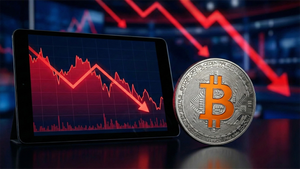Despite Challenges of Staffing Shortages & Burnout, Nearly 60% of Teachers Say That STEM Education Offers Unique Rewards
The positive impacts that U.S. public schools and their communities enjoy from STEM (Science, Technology, Engineering, and Math) programs were underscored in a new survey conducted among some of the nation’s leading middle and high school STEM educators. Nearly 60% of teachers indicate that although teaching STEM is challenging – it offers educators unique rewards by engaging their student’s curiosity and enhancing their motivation, according to Samsung Solve for Tomorrow’s “The State of STEM Education” survey.
Additionally, the study finds that STEM education has been insulated from controversial issues (35%) – with 65% reporting that local school boards and communities are either “generally supportive” of STEM in their school or that the success of the STEM program has been a “solid positive” with the community.
Teachers also told us that implementing the Problem-Based Learning (PBL) techniques utilized in their Samsung Solve for Tomorrow STEM projects helped counteract the negative impacts of the COVID-19 pandemic on education at their schools. Among respondents, 46% agreed that by helping students see that their work can have an impact outside of the classroom and in their communities PBL has been a strong antidote to COVID-induced feelings of isolation, helplessness, and anxiety about the state of the world.
In December 2022 and January 2023, Samsung polled nearly 430 U.S. educators who led their school’s efforts in entering the company’s annual Solve for Tomorrow STEM competition, which is currently in its 13th year. Solve for Tomorrow challenges U.S. public school students in grades 6-12 to explore the role STEM can play in solving some of the biggest issues in their local communities. The competition requires participating students and teachers to engage in active, hands-on learning that can be applied to real-world problems – making STEM more tangible and showcasing its value beyond the classroom.
Among the survey’s top-line findings:
Responding teachers agreed that within their schools, STEM education is perceived as a “valuable contribution to our education mission” (74%) and a “doorway to tomorrow’s opportunity for a diverse student cadre” (53%). However, while these front-line educators feel “respected by students” (60%) and “energized by students’ enthusiasm for STEM” (60%), significant numbers of teachers also report being “underpaid” (41%) or “burned out” (26%).
“The State of STEM Education” validated that STEM teacher shortages are no myth. More than two-thirds of educators (65%) said that their school is experiencing a shortage of STEM faculty, with 13% indicating that it’s a severe issue. Probing the challenges of teaching STEM classes today versus other subjects, the majority of respondents (59%) reported that, “STEM education is challenging – but it also offers unique rewards in terms of encouraging student curiosity and motivation.” At the same time, fewer than 8% felt that remote learning took a heavier toll on STEM education than on other disciplines.
“Through our work on Solve for Tomorrow, Samsung has seen just how critical STEM Teachers are to ensuring the future of STEM education – and a vibrant STEM workforce,” said Ann Woo, Director of Corporate Citizenship for Samsung North America. “Society at large needs to listen to and understand the concerns of these dedicated educators - innovation and progress depend on the fruits of their hard work. We hope the insights from ‘The State of STEM Education’ will contribute to making sure our communities continue to provide what STEM educators need to thrive.”
The survey took a deep dive into the use of PBL – a technique adapted by many in the field as a tool for engaging students with approaches used in STEM workplaces. Educators expressed wide support for PBL with 44% saying that PBL has been broadly effective in engaging their classes and sparking interest in STEM careers. Another 44% stated that they believe PBL is a great equalizer, helping students who have had a hard time in STEM classes ‘get it,’ while also letting STEM naturals stretch their wings.
Speaking to the value of participating in Samsung Solve for Tomorrow, educators shared perspectives including:
- “We will be incorporating more opportunities for PBL with all our students at all levels. It is empowering to see their curiosity grow and their critical thinking skills develop. This is especially true of the students who previously may have been disinterested in science and STEM careers. To see students be successful and excited for science encourages our faculty to seek and create more opportunities for them to reach and exceed their dreams.”
- “It seems with every year since the pandemic has introduced new challenges. PBL has given the majority of my students a purpose for learning and for being here. They know they can just learn from home and be with their friends online but PBL offers a tangible learning situation. It feels "real" to them.”
These results strongly validate key objectives or the Samsung Solve for Tomorrow competition and other similar STEM education initiatives – to encourage diverse, innovative, and creative minds to pursue STEM careers, and to increase diversity, equity, and inclusion within STEM professions.
About the Solve for Tomorrow “ State of STEM Education” Survey
Samsung Solve for Tomorrow surveyed 429 STEM educators from across the U.S. between December 12, 2022 through January 14, 2023. Primarily teachers of STEM subjects (94%), a quarter of our respondents indicated that non-STEM subjects were either their primary or secondary responsibility. The composition of the respondent pool was relatively balanced – 48% to 63% – between middle school and high school teachers, reflecting some crossover between teachers who teach both 6-8 and 9-12 grades. Most school districts represented were suburban (43%) and the remainder almost evenly divided between rural (29%) and urban (28%). The full survey findings are available upon request.
About Samsung Electronics America, Inc.
Headquartered in Ridgefield Park, N.J., Samsung Electronics America, Inc. (SEA) is a leader in mobile technologies, consumer electronics, home appliances and enterprise solutions. The company pushes beyond the limits of today’s technology to provide groundbreaking connected experiences across its large portfolio of products and services, including mobile devices, home appliances, home entertainment, 5G networks, and digital displays. As EPA’s ENERGY STAR® Corporate Commitment Partner, SEA is dedicated to making a positive impact on the environment through its eco-conscious products, practices and operations. To learn more and to get involved, visit Samsung.com. For the latest news, visit news.samsung.com/us and follow @SamsungNewsUS. SEA is a wholly owned subsidiary of Samsung Electronics Co., Ltd.
View source version on businesswire.com: https://www.businesswire.com/news/home/20230323005070/en/
Contacts
Media:
Ray Yeung + Nancy Zakhary | ray@relev8.co + nancy@relev8.co




